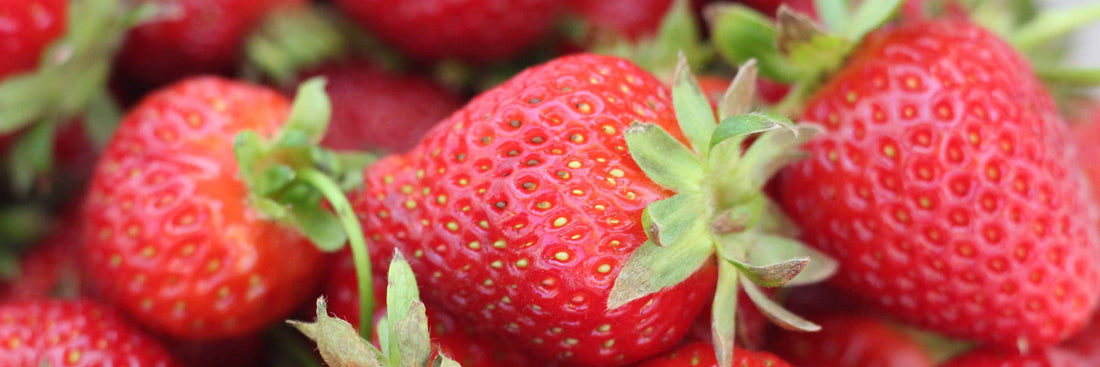Types
June bearing & everbearing are the two types of strawberries grown in Michigan. Fruits of everbearers are usually smaller than June-bearers fruit. June bearing strawberries produce a crop during a two-to-three week period in the spring. June-bearers produce flowers, fruits and runners. Everbearing strawberries produce periods of flowers and fruit during the summer. Everbearing strawberries are great for gardeners who have limited space. They can be grown in terraced beds, barrels or pyramids. They can also be used as an edging plant or a groundcover.
When to Plant
Plant strawberries as soon as the ground can be worked in the spring. This is usually in March or April allowing the plants to become well established before the hot weather arrives. Do not work the soil if it is wet. Wait a few days until it dries.
Planting Depth
Try to plant strawberries on a cloudy day or during the late afternoon. Set the strawberry plant in the soil so that the soil is just covering the tops of the roots. Do not cover the crown. After 4 to 5 weeks, the plants will produce runners and new daughter plants. The center plant is set correctly, with the soil just covering the tops of the roots. The plant on the left is set too shallow; the plant on the right too deep.
Blossom Removal
During the first growing season, remove flowers of June-bearing strawberries as soon as they appear. Removing the flowers promotes root and runner development thereby insuring a large crop the following year. For everbearing and day-neutral strawberries, remove the flowers until the end of June and then after that date allow the flowers to remain to set fruit for a summer/fall harvest.
General Care
Strawberries are among the most widely grown fruit in the home garden. Strawberries prefer a well-drained soil, high in organic matter. They need full sun for the highest yields, at least 6 hours per day. Do not plant strawberries where peppers, tomatoes, eggplant and potatoes have been grown. These plants could harbor verticillium wilt, a serious strawberry disease. Strawberries need about one inch of water per week during the growing season.
Fertilization
Before planting apply one pound per 100 square feet of a 10-10-10 fertilizer and dig into soil at least six to eight inches deep. After the first harvest in the second season strawberries should be fertilized after renovation in July. Water the fertilizer in to get it down to the root zone. This application is made to keep the plants in a vigorous condition and to promote new growth causing the development of more fruit buds. Do not over fertilize. Overfertilization will cause excessive vegetative growth, reduce yields; increase losses from frost and foliar disease and result in winter injury.
Mulching
Strawberries are very susceptible to frosts in the spring. Mulches that have covered the plants during the winter months should be removed in the early spring but should be left in the aisles to cover the blossoms in the spring when frost is predicted. Old blankets or sheets can be used for protection against frost. Spun bond material such as Reemay or row covers will protect strawberry plantings down to temperatures of about 23°-25°F. In the fall between mid-November and mid-December in Michigan but before temperatures drop below 20 degrees; apply a straw mulch three to four inches deep over the
rows. This mulch will protect the plants from cold temperatures that can kill the buds and injure roots and crowns. Remove the mulch in the spring when the strawberry leaves show yellow. Leave some of the mulch around the plants to keep the fruit from soil contact and to conserve soil moisture.

